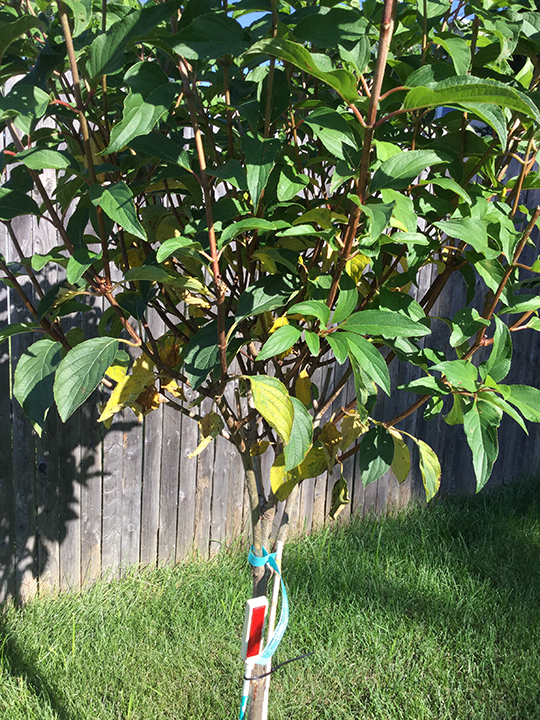The Greatest Guide To Hydrangea Leaves Turning Yellow
The Greatest Guide To Hydrangea Leaves Turning Yellow
Blog Article
Hydrangea Leaves Turning Yellow Things To Know Before You Buy
Table of ContentsThe Basic Principles Of Hydrangea Leaves Turning Yellow The Definitive Guide to Hydrangea Leaves Turning YellowThe Main Principles Of Hydrangea Leaves Turning Yellow The Hydrangea Leaves Turning Yellow Statements
Hydrangea plants are recognized for their gorgeous blossoms, however in some cases their fallen leaves can transform yellow. This is usually an indicator that something is wrong and the plant needs your help.Hydrangea leaves turning yellow can be a cause for concern. There are a number of reasons that Hydrangea leaves turn yellow, and most of them are easy to take care of. Let's look at the most typical factors why Hydrangea leaves turn yellow and how to repair them. Hydrangea leaves normally transform yellow when the plant is overwatered.
When the roots of a plant are immersed in water for lengthy periods, they start to asphyxiate and rot. This procedure cuts off the roots' oxygen supply, triggering the fallen leaves to transform yellow and eventually pass away. Overwatering can also result in other troubles such as leaf decrease, origin damages, and fungal growth.
If you think your Hydrangea is overwatered, the very best service is to allow the soil dry completely prior to sprinkling once again. It's likewise an excellent idea to inspect the water drainage of your pot or garden bed and see to it that water is not merging around the plant's roots. Hydrangea plants require well-drained soil to flourish.
The Best Strategy To Use For Hydrangea Leaves Turning Yellow
Hydrangea leaves can likewise turn yellow if the plant is not getting enough water. This occurs when the plant does not receive enough water, and the dirt starts to dry out.

This is referred to as "plant food shed," It occurs when the plant's roots are revealed to way too much fertilizer. The roots can not take in all of the nutrients and become harmed. This damage causes the fallen leaves to turn yellow and eventually die. Various other indicators of fertilizer shed include brown or yellow fallen leaves, wilting, and stunted growth.
This will help eliminate any kind of excess plant food from the roots of the plant. It's additionally an excellent idea to decrease the amount of plant food you are making use of.
Not known Factual Statements About Hydrangea Leaves Turning Yellow

If your Hydrangea is ravaged with pests, treating the plant with neem or gardening oil is the finest remedy. It's likewise great to eliminate any affected leaves from the plant (Hydrangea additional reading Leaves Turning Yellow).
To avoid spreading out the disease, make sure to sanitize your scissors before cutting any ends. Hydrangea leaves can additionally turn yellow if the temperature emphasizes the plant. This typically occurs when the plant is subjected to extreme cold or warmth. The fallen leaves of the plant will certainly transform yellow and begin to hand over.
If the temperature level emphasizes your Hydrangea, you require to move the plant to a place where it will be safeguarded from the severe cool or warm. You can also attempt to give the plant with some partial shade if revealed to guide sunlight. You can also attempt adding compost around the plant base to help regulate the temperature level.
Not known Facts About Hydrangea Leaves Turning Yellow
The fallen leaves can likewise turn yellow if the Hydrangea plant has root rot. This is generally brought on by overwatering or inadequate drain. When the plant's origins are submerged in water for too long, they begin to rot. One of one of the most usual origin rot symptoms is yellowing leaves, as the fungi avoids the roots from absorbing nutrients from the soil.
Various other indicators of origin rot consist of stunted growth, wilting, and leaf decrease. Inspect the origins of your Hydrangea if it has origin rot. If they are black or brownish, then they are possibly rotten. If some healthy and balanced origins are left, you can attempt to conserve the plant by replanting it in a new pot with fresh soil.
Water the plant meticulously, making certain not to overwater it. If your Hydrangea is heavily affected by origin rot, beginning with a new plant is best. Natural causes can likewise create yellow hydrangea leaves. One of the most article common cause is the plant's age. As Hydrangeas age, their leaves will slowly turn yellow and brown prior to Resources falling off the plant.
You can help the plant by ensuring it is obtaining enough water and nutrients. You can likewise mulch around the plant base to assist it keep moisture. There are a number of reasons why hydrangea leaves might turn yellow and drop off. Hydrangea Leaves Turning Yellow. One opportunity is that the plant is not obtaining sufficient water.
Report this page